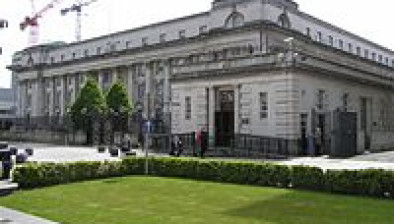Supreme Court: Test for security for costs refined as Quinn Insurance ordered to cover €30m legal bill

Killian Flood BL
The Supreme Court has ordered Quinn Insurance Limited to provide security for costs to PricewaterhouseCoopers, whose legal bill stands at €30 million in the long-running dispute. In reaching this decision, the court reiterated the proper approach to security for costs (SFC) applications and outlined a new limb to the legal test.

About this case:
- Citation:[2021] IESC 15
- Judgment:
- Court:Supreme Court
- Judge:Mr Justice Frank Clarke
In delivering the main judgment of the court, Chief Justice Frank Clarke held that QIL had not satisfied the criteria contained in Connaughton Road Construction Ltd v. Laing O’Rourke [2009] IEHC 7 and, additionally, had not established that the proceedings would be stifled if security for costs was granted. Further, the court also held that QIL had not established the special circumstance that the proceedings were in the public interest.
Background
The plaintiff, QIL, was an insurance firm that collapsed dramatically following the global financial crisis in 2008. During 2005-2008, PwC gave unqualified assurances in relation to QIL’s financial statements and returns. The plaintiff’s claim was that PwC was negligent in providing these assurances and subsequently sued them for the losses which were incurred. The total claim was approximately €900 million. QIL also owed €1.1 billion to the Insurance Compensation Fund.
The defendant brought a SFC application on the basis that QIL was an impecunious corporate plaintiff and PwC had a bona fide defence to the proceedings. This was accepted by the parties. The dispute centred on the QIL’s claim that it was impecunious due to the actions of PwC and, therefore, there were special circumstances to refuse the application.
In the High Court, the judge determined that PwC had established a prima facie entitlement to security for costs, but held that special circumstances existed to justify the refusal of the application. The court determined that the plaintiff’s impecuniosity resulted from the actions of the defendant and that there was a significant public interest dimension to the proceedings being heard.
The Court of Appeal overturned the High Court decision, ruling that a SFC order would not stifle the proceedings due to the fact that QIL could potentially be funded by the ICF. The Court of Appeal also determined that the public interest ground was not made out. The plaintiff was granted leave to appeal the decision to the Supreme Court.
Supreme Court
In a 61-page judgment, the Chief Justice began by setting out the two previous decisions in the courts below, as well as the extensive submissions made by both parties in the case. The court then considered the proper general approach to be taken in SFC applications. It was noted that overall approach to corporate security for costs was well-established and was not in dispute between the parties.
The court said that the high costs of litigation could be unfair to a defendant who had no reasonable prospect of recovering from an impecunious corporate plaintiff. However, it was also noted that security for costs could have the effect of obstructing or stifling litigation. Ultimately, both scenarios involved a barrier of access to justice. However, the court pointed out that many litigants have to consider whether to pursue proceedings due to prohibitive legal costs and that there was no reason why impecunious plaintiffs should not also have to make that decision.
Where a plaintiff defended a SFC motion on the basis that the defendant caused the plaintiff to be impecunious, the court said that certain questions of principle arise. The court held that there was almost inevitably going to be some injustice to a party arising from a SFC order, but that it was important for a court to take an approach that carried the least risk of injustice.
It was held that if the Connaughton Road test was satisfied by a plaintiff (that the impecuniosity resulted from the defendant’s actions) then this should tip the balance in favour of refusing security. However, if the test was not satisfied, “the Court should enter into an inquiry as to the likelihood of the proceedings actually being stifled if an order is made and take the result of that analysis into appropriate account in its overall assessment”. The court described the above analysis as a “two stage process”.
In this regard, it was said that both defendants and plaintiffs had to put up substantial evidence in SFC applications and that a court should carefully scrutinise the cases made by both parties in such applications. The court also noted that an assessment of SFC was essentially a mathematical exercise, which was “fundamentally rooted in reasonable estimates about numbers.”
The Chief Justice considered the Connaughton Road principle that the damage caused by a defendant must be the sole cause of a plaintiff’s impecuniosity. The court held that this was justified because in almost every case, a plaintiff could show some level of impecuniosity due to a defendant’s actions. As such, the test would be set at nought if the threshold fell short of the entire cause of impecuniosity. In considering the criticism of this approach by Mr Justice Gerard Hogan in CMC Medical Operations Ltd (In Liquidation) v. Voluntary Health Insurance Board [2015] IECA 68, the court said this was ameliorated by the introduction of “the second leg of the test,” being an assessment of whether the proceedings would be “truly stifled” by an SFC order.
In assessing the question of stifling, it was for the plaintiff to put up “reasonable detail” in a SFC defence. A defendant should not raise particulars or require additional information, although they could criticise the extent of information provided by a plaintiff. The fact that proceedings may be stifled was not to be a decisive factor in a SFC application, but it must be taken into account when assessing the balance of justice, the court held. Further, the court held that the likelihood that proceedings would be stifled could play a very significant role in assessing whether the ‘public interest’ special circumstance was established.
Decision
Applying the above findings to the facts of the case, the court held that, even if QIL was successful at trial, there would still be a huge €200 million shortfall in the €1.1 billion owed to the ICF. Although the court accepted that there may be cases where a plaintiff could claim that it would not have gone into liquidation but for the alleged wrongs of a defendant, it was held that there was a significant onus on the plaintiff to establish this. Further, it was held that the court must make a realistic assessment of the chances that QIL would recover in full at trial.
On the evidence presented in the case, QIL did not satisfy the court that it could have made up the huge deficit but for the alleged wrongs of PwC. The court said that the assertions that QIL could have remained solvent were “very much at the speculative end of the spectrum.” There was simply not sufficient evidence to meet the “heavy onus” to justify how it could have kept trading.
Turning to the question of the stifling of proceedings, the Chief Justice held that QIL could potentially fund the litigation via the ICF. Although QIL did not have a “blank cheque”, it was certainly possible that the President of the High Court could order further funding of the litigation for QIL. As such, the plaintiff would not be stifled by a SFC order in the proceedings.
On this basis, the court also said that the ‘public interest’ special circumstance was not met by QIL either. A plaintiff relying on the public interest exception had to demonstrate that the proceedings would be stifled if a SFC order was made, rather than just demonstrate that there was a public interest element to the case, the court said. Owing to the fact that QIL had an avenue to fund the litigation, the court held that the public interest was not defeated by an SFC order.
Conclusion
In light of the findings in the case, the court refused the appeal and affirmed the order of the Court of Appeal. The plaintiff did not meet the test in Connaughton Road and it was not likely that the proceedings would be stifled. The court also opined that flexible approaches to SFC could be taken by a court, including staggered payments or guarantees from natural persons. Additional concurring judgments were provided by Mr Justice Donal O’Donnell and Mr Justice John MacMenamin.









